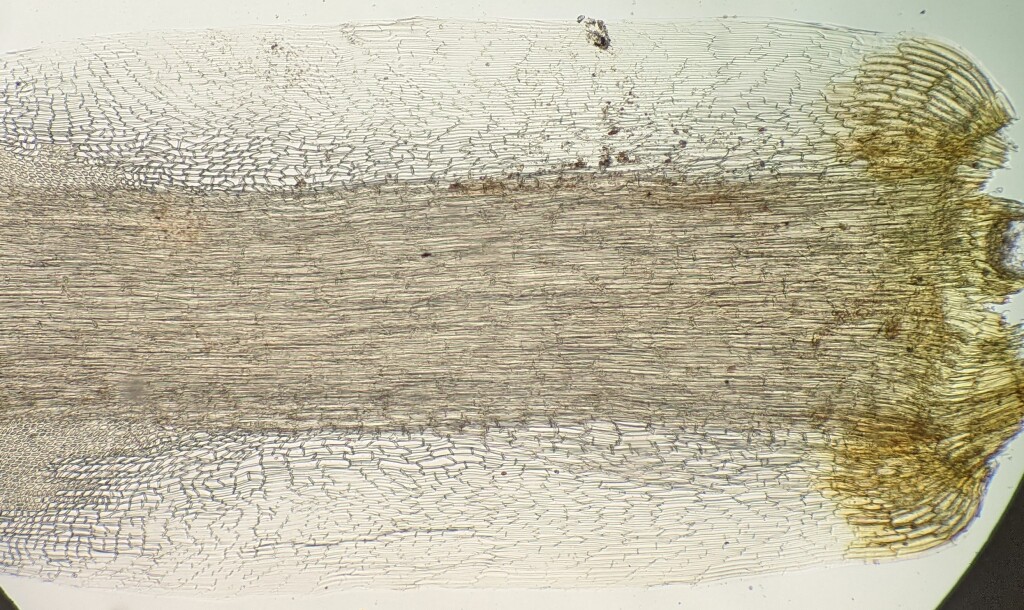Campylopus introflexus
(Hedw.) Brid.Dioicous. Asexual propagules absent. Turfs on soil, rocks and logs, bright green to brownish green, occasionally appearing greyish due to hyaline hairpoints. Stems mostly branched by innovation, 0.5–4 cm long, uniformly foliate when sterile, ±comose when fertile, brown, covered with orange-brown rhizoids. Leaves erecto-patent to slightly curved outwards when moist, erect and curved toward the stem or homomallously curved when dry, narrowly ovate-lanceolate, (3.7–) 4–6.5 mm long, (0.5–) 0.6–1.2 mm wide, strongly concave to subtubulose; apex mostly ending in a hairpoint, occasionally concolorous; hairpoint usually squarrose-reflexed, hyaline, toothed, to 3.5 mm long; costa excurrent, occupying c. 1/3–2/3 of leaf width; margins entire, plane, without a border; laminal cells in apical half rounded-rhomboidal to elliptic, oblate to short-oblong, 6–25 μm long, 6–18 μm wide, not pitted; basal laminal cells narrowly rectangular, 25–125 μm long, 5–13 μm wide, hyaline throughout, including above alar region; alar cells not or weakly inflated, rectangular to elliptic, 30–125 μm long, 10–25 μm wide, hyaline, often weakly demarcated, unistratose. Seta 5–10 mm long, yellow-brown to black, smooth, not twisted. Capsule inclined to pendent, ovoid, 1.2–1.8 mm long, mostly curved, yellow-brown to tan, sulcate when dry. Operculum rostrate from conic base, 0.6–0.8 mm long. Peristome Campylopus-type.
LoM, MuM, Wim, GleP, VVP, VRiv, MuF, GipP, OtP, WaP, Gold, CVU, GGr, DunT, NIS, EGL, EGU, WPro, HSF, HNF, OtR, Strz, MonT, HFE, VAlp. New Zealand, southern South America and southern Africa. Naturalised in western Europe and western North America. One of the most widespread and common species in Victoria, occurring throughout the state, but rare in the north-west, in a variety of vegetation types from rainforest, dry sclerophyll forest, river red gum forest, heathland, and alpine grassland.
Campylopus introflexus is usually an easily recognisable species, distinguished by its reflexed hairpoints and short, elliptic, strongly incrassate and non-pitted laminal cells toward the apex. Occasional plants lack the hyaline hairpoints or have rhomboidal cells with thinner walls and have been recognised as C. incrassatus Müll.Hal. or C. flindersii Catches. & J.-P.Frahm (Klazenga 2012). Synonymy of these names with C. introflexus is supported by a continuum connecting these forms to more typical C. introflexus and some specimens that mostly clearly match these forms but have the occasional leaf with typical C. introflexus features, such as a reflexed hairpoint or patches of elliptic cells (Klazenga 2012).
 Spinning
SpinningKlazenga, N. (2012). Australian Mosses Online. 35. Leucobryaceae: Campylopus. http://www.anbg.gov.au/abrs/Mosses_online/Leucobryaceae_Campylopus.pdf.



